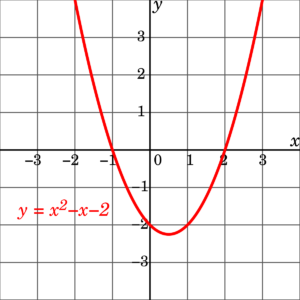Contents:
- What is a Quadratic Sequence?
- How to Verify a Sequence is Quadratic
- Finding the nth Number in a Quadratic Sequence
- Finding the General Form
What is a Quadratic Sequence?
A quadratic sequence has the general form
T(n) = an2 + bn + c.
Where a, b, and c are constants.
For example, all of the following are quadratic sequences:
- 3, 6, 10, 15, 21,…
- 7, 17, 31, 49, 71,…
- 31, 30, 27, 22, 15,…
Quadratic sequences are related to squared numbers because each sequence includes a squared number an2. For example, the formula n2 + 1 gives the sequence: 2, 5, 10, 17, 26, …. That sequence was obtained by plugging in the numbers 1, 2, 3, … into the formula an2:
- 12 + 1 = 2
- 22 + 1 = 5
- 32 + 1 = 10
- 42 + 1 = 17
- 52 + 1 = 26
More formally, we say that a quadratic sequence has its nth terms given by a quadratic function T(n) = an2 + bn + c.

How to Verify a Sequence is Quadratic
A sequence is an ordered list of numbers and each number in the sequence is called a term. Each term in a quadratic sequence is related by the same common second difference. It’s called a common second difference (or second order difference) because you have to find the difference between each term twice. Second order differences in quadratic sequence are always constant. So, to verify that a particular sequence is quadratic, find the common second difference and verify that those differences are constant.
Example question: Verify the sequence
3, 12, 25, 42 63, …
is quadratic:
Step 1: Subtract each term from the next (i.e. subtract the second term from the first, the third from the second, and so on):
- 12 – 3 = 9,
- 25 – 12 = 13,
- 42 – 25 = 17,
- 63 – 42 = 21.
Step 2: Find the difference between the terms you found in Step 1 (9, 13, 17, 21,…)
- 13 – 9 = 4,
- 17 – 13 = 4,
- 21 – 17 = 4.
The common second difference is a constant (4), so 3, 12, 25, 42 63, … is a quadratic sequence.
Finding the nth Number in a Quadratic Sequence
To find the nth number, plug that number into a given formula. For example, to find the 10th number in the sequence n2 + 1:
- 102 + 1 = 101.
Finding the General Form
The general form of a quadratic sequence follows T(n) = an2 + bn + c.. So, given a sequence of numbers, your goal is to identify a, b, and c (the coefficients).
Example question: Find the general form of the quadratic sequence 6, 11, 18, 27, 38, 51:
Step 1: Find the first coefficient (a):
- Find the common second difference:
- 11 – 6 = 5,
- 18 – 11 = 7,
Giving a common second difference of 2 (because 7 – 5 = 2). We only needed to calculate the first couple of terms here because we don’t need to verify it’s quadratic, only calculate the second difference for the formula.
- Use algebra to solve the formula 2a = 2nd difference. Our second difference here is 2, so (plugging that into the formula), we get:
- 2a = 2
- a = 2/2 = 1
Out first coefficient is 1.
Step 2: Find the second coefficient (b) using the formula:
3a + b = difference between the first and second terms.
The difference between terms 1 and 2 is:
- 11 – 6 = 5,
Putting that into the formula (along with “a” from Step 1) we get:
- 3(1) + b = 5
- 3 + b = 5
- b = 2
Our second coefficient (b) is 2.
Step 3: Find the third coefficient (c) using the formula a + b + c = first term.
For this particular sequence, the first term is 6. Plugging that into the formula (along with “a” from Step 1 and “b” from Step 2):
- 1 + 2 + c = 6,
- 3 + c = 6,
- c = 3.
Our third coefficient is 3.
Step 4: Place your answers from Steps 1 to 3 into the formula T(n) = an2 + bn + c:
T(n) = 1n2 + 2n + 3 T(n) = n2 + 2n + 3.
If you have a calculator that has a regression feature, this video is a great hack:
References
Surowski, D. IB Mathematics HL — Year 1. Unit 3: Sequence, Series, Binomial Theorem and Counting Arguments. Retrieved January 17, 2020 from: https://www.math.ksu.edu/~dbski/IBY1/unit3_homework.pdf
Yee, L. Sequencing Math DNA: Differences, Nth Terms, and Algebraic Sequences.
Image: N. Mori | Wikimedia Commons (Public Domain).